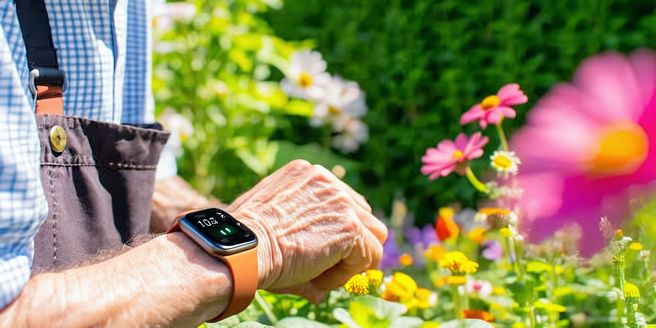Elderly Care Technology

The Rise of Smart Home Devices for Seniors
Smart home devices are revolutionizing the way seniors live independently. With a range of devices from smart thermostats to automated lighting, seniors can enjoy enhanced convenience and safety in their homes. These devices can be controlled remotely, allowing family members or caregivers to assist from afar. Smart security systems, including cameras and alarms, provide peace of mind by ensuring the elderly are safe from potential threats. Additionally, voice-activated assistants help seniors easily manage daily tasks, set reminders, and even maintain social connections. Smart home technology not only empowers seniors but also alleviates some of the worries associated with aging in place. As the population of seniors grows, the demand for smart solutions tailored to their needs continues to rise, making life more comfortable and secure for the elderly community.
Wearable Technology: Enhancing Senior Safety
Wearable technology is playing an increasingly important role in enhancing safety for seniors. Devices such as smartwatches and fitness trackers are equipped with sensors that monitor vital signs and activity levels, providing real-time health data. These wearables can detect falls, alerting emergency services or designated family members immediately, ensuring timely assistance. Some devices also track location, offering an additional layer of security for seniors with cognitive impairments who might wander. Furthermore, wearables can remind seniors to take medications or attend appointments, promoting better health management. The integration of technology into daily life helps seniors maintain independence while also ensuring their well-being is constantly monitored. As technology advances, wearables become more sophisticated, offering new features that cater specifically to senior lifestyles and concerns.
Telehealth Services: Connecting Seniors to Care
Telehealth services have become a vital lifeline for seniors, allowing them to access healthcare without leaving their homes. Through virtual consultations, seniors can communicate with healthcare providers, receive diagnoses, and manage chronic conditions. This convenience reduces the need for frequent visits to healthcare facilities, saving time and decreasing exposure to illness. Telehealth also provides access to specialists who might not be locally available, expanding the healthcare options for seniors in remote or underserved areas. Moreover, telehealth platforms are designed to be user-friendly, catering to seniors who may not be tech-savvy but still wish to independently manage their health. By bridging the gap between seniors and healthcare providers, telehealth fosters an inclusive healthcare system that is attentive to the needs of the aging population.
Virtual Companionship and Social Engagement Tools
Virtual companionship and social engagement tools are becoming invaluable to seniors seeking to combat loneliness and isolation. Through platforms like video conferencing and social networking apps, seniors can stay in touch with loved ones and meet new people with similar interests. Virtual reality experiences offer entertainment and can even provide therapeutic benefits, such as reducing symptoms of depression. Online groups and chat rooms offer a sense of belonging and community, keeping seniors connected in meaningful ways. These tools not only enhance social lives but also encourage cognitive engagement, crucial for mental health. As society becomes more digitally oriented, ensuring seniors have access to these technologies helps promote a lifestyle that is both socially and emotionally fulfilling.
Medical Alert Systems: Innovations in Emergency Response
Medical alert systems have evolved significantly, providing more robust and reliable solutions for seniors in emergencies. Modern systems are now wearable, allowing for discreet use while offering real-time monitoring with GPS tracking. These systems can detect falls and automatically send alerts to emergency services or caregivers without requiring any action by the senior. The integration of smartphone connectivity ensures immediate and accurate location tracking, expediting emergency response. Some systems even offer two-way communication, enabling seniors to speak directly to operators during a crisis. With improved battery life, these devices offer long-term use without frequent charging. As technology advances, medical alert systems continue to innovate, providing seniors with security and reassurance, allowing them to live independently while knowing help is just a button press away.